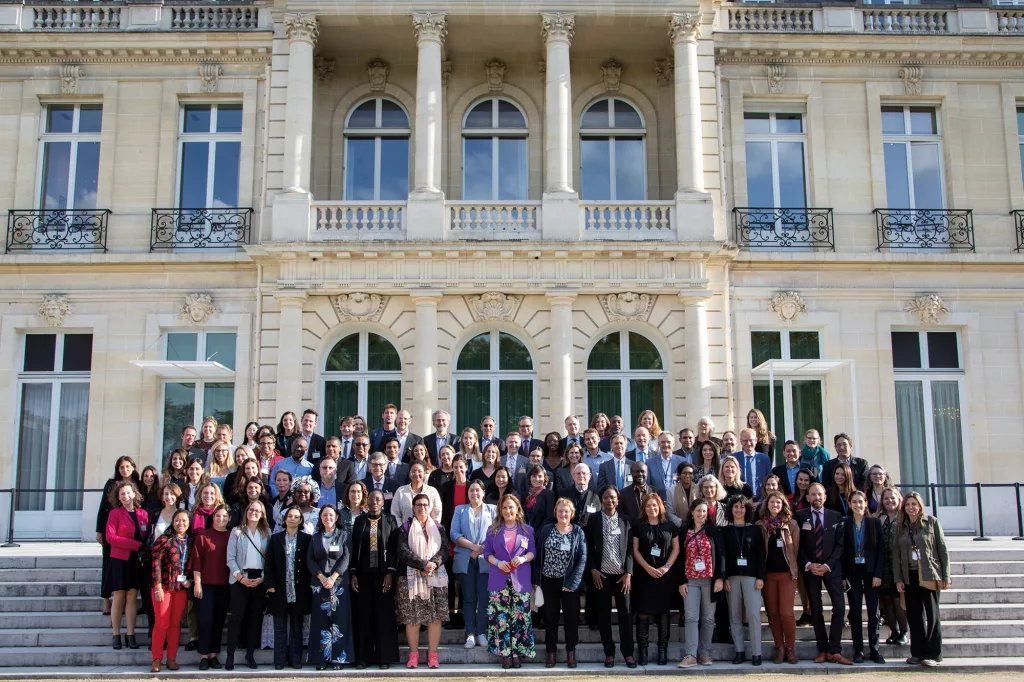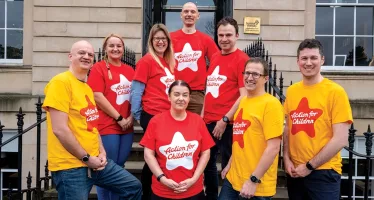OECD: What Will It Take to Achieve UN’s Sustainable Development Goals?
Achieving the UN’s Sustainable Development Goals (SDGs) requires financial and non-financial investment to discover sustainable development pathways.

Photo: © Andrew Wheeler
One of the key elements is securing enough capital. Development finance providers are working to mobilise commercial finance. They are designing blended finance instruments and mechanisms, and supporting the issuance of debt instruments such as green, social, and sustainability linked (GSS) bonds.
The OECD DAC Blended Finance Principles guide the action of development finance providers and help to guarantee that efforts are rooted in robust, locally owned development objectives and priorities.
Mobilising finance alone is not enough. To achieve sustainable development results, development finance providers must measure and manage development impact of investments.
But how?
Investment decisions are still being taken with inadequate information about their social and environmental effects. Despite new taxonomies, reporting standards and impact principles, the market is increasingly confused. That means an increased risk of “impact washing”.
As a standards setter, the OECD is conscious of this. This is why, when we developed the United Nations Development Programme Impact Standards for Financing Sustainable Development, we decided not to go it alone, or in a silo. We opted to co-create them with the UNDP and some 300 experts from development finance institutions (DFIs), the private sector, and civil society organisations.
We knew that this was just the first step. To ensure development finance would achieve its full potential, we must work with other standard-setters and maximise coherence across our joint efforts.
“Investment decisions are still being taken with inadequate information about their social and environmental effects. Despite new taxonomies, reporting standards and impact principles, the market is increasingly confused.”
What should this collaboration look like? Do we all need to agree on one set of standards? And if so, what should they cover? What do development finance practitioners ultimately need?
To try to answer these questions, on September 30, 2022, we gathered standards setters and practitioners at the OECD for an in-person conference titled Finance United: Impact Investors, Financial Service Providers and the SDGs. We co-organised the event with the Social Performance Taskforce (SPTF), and had the opportunity to hear from the UNDP SDG Impact Team, Social Value International (SVI) and the International Sustainability Standards Board (ISSB)) and practitioners (such as iDB Invest, the UN Joint SDG Fund, the US DFC, and the Global Steering Group on Impact Investing.
These groups focused on market needs, and how we can collectively deliver. We had donors, DFIs, financial service providers and CSOs around the table to discuss the alignment and implementation of standards.
Here are some of the key takeaways:
1. Address culture and mindset to bring about changes in practice. In the past 12-18 months, the conversation around impact reporting has accelerated, and there has been harmonisation and consolidation among standard setters regarding transparency and external reporting. This led to the establishment of European Financial Reporting Advisory Group (EFRAG). Despite this, the acceleration in reporting standard risks pushing “impact” to become an “add-on” unless it is coupled with changes at the organisational level. Development finance providers have to change the way they embed impact into their organisations, across all levels, to become impact-orientated and achieve real development results. Only then will impact become part of organisational culture.
2. Focus on decision-making, not metrics. Impact standards are designed to be a universal approach for how development finance providers, public and private make decisions. They focus on the internal decision-making process, the mindset shift needed to bring impact into the decision-making process.
Impact standards shift the focus from a mere metrics-led compliance to generating development results that are embedded, and therefore last. This mindset shift is what is needed to avoid SDG-washing, but also to re-orientate development finance providers from a risk-return logic to a risk-return-impact logic.
We need to develop a different starting point — “How can we create more impact? Are we creating enough positive impact?” — rather than “How much impact have we created?”
We need to collect data and build on that. It is a journey to build systems that are robust.
3. Unite in diversity. Standards setters cater to different audiences. Different groups of stakeholders use different words and ideas (such as human rights, capital, sustainable development) — yet we all use the word “impact” to describe our goal. We have to recognise this diversity of positions and accept that we will never have a single impact management standard that fits all actors.
We need to be clear about what we are referring to. Companies and investors see all these different initiatives and think there should be consolidation, but different sets of standards are focused on specific groups of actors, with management frameworks, metrics, and taxonomies for different constituencies. Our engagement with the UNDP grew out of the Impact Management Project (IMP). We saw there were gaps between various principles and frameworks, and these extended into the decision-making processes.
We decided to work on that particular gap, and develop standards for the SDGs that would bring the same language to different actors who have operated in different ways, and with different focuses. We have been mindful of each other’s work and have been increasingly converging in the various pieces of the puzzle.
While catering to different audiences, and using slightly different language, the impact management standards promoted by the OECD, UNDP, SPTF and SVI all promote the same values. They all focus on supporting organisations in embedding impact considerations into their strategy, management approach, governance, and transparency. They all push for more intentionality in impact.
4. The proof of the pudding is in the implementation. The September 30 event showed that, as standard setters, we are harmonised at a high-level, on the key messages. Although this is an excellent first step, we won’t stop here. We realise that there isn’t yet harmonisation on implementation. Organisations are not consistently implementing the standards. The standards will only make a difference if they ignite a real change in mindsets, based on intentionality and collective learning. This is why we have to move from Standard setting to implementation — and during the conference discussions in September, we focused on case studies to show how organisations are using and implementing the standards, the challenges they face, and what they have learned so far.
While harmonisation is important, it is also important to adapt to relevant contexts. Standards need to be tested and improved through the same consultative process that was used to develop them, through multiple iterations with a diverse range of stakeholders who act as a learning community. This helps us to challenge all development finance providers to do more and better, and to be ambitious on their development impact results.
5. Context matters. Not all development actors can implement standards in the same way. In developing countries, efforts must made to avoid the unintentional creation of more barriers. The standards aim to encourage investors to use ESG criteria not as a tool to exclude potential investee with low scores, but to support organisations to improve, and take them on a journey to become more ESG-savvy. Impact data which is important for development finance actors may not be available in developing countries, requiring that the data are created before investees are asked to collect and report.
The conference conclusions highlighted a number of gaps in ensuring impact in developing countries, and the need for guidance to support the OECD UNDP Impact Standards for Financing Sustainable Development.
The overarching message was that for SDG delivery, impact standards are vital in developing countries. Achieving this would help to reduce transaction costs, facilitate the aggregation of assets, and potentially mobilise greater volumes of capital.
You may have an interest in also reading…
Scottish Institution Leads with Gusto, by Example
Colleague-friendly, compassionate, and with wholesome social goals in mind, Scottish Friendly is going strong… Scottish Friendly is an institution dedicated
Turning Promises Into Reality – The Business Case for Gender Equality in Achieving the SDGs
By Paula Tavares and Otaviano Canuto As world leaders gathered this month for high-level talks at the 74th United
DESERTEC Foundation Endorses DESERTEC Power for Kingdom of Saudi Arabia
DESERTEC Power was established to advance the energy supply in the Kingdom of Saudi Arabia. This follows the direction of



















































































